|
Books Should Be Free Loyal Books Free Public Domain Audiobooks & eBook Downloads |
|
|
Books Should Be Free Loyal Books Free Public Domain Audiobooks & eBook Downloads |
|
Fantasy Books |
|---|
|
Book type:
Sort by:
View by:
|
By: F. Anstey (1856-1934) | |
|---|---|
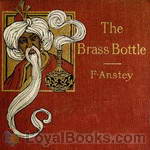 The Brass Bottle
The Brass Bottle
What happens when a not-so-lucky man happens upon a brass bottle and releases the djinni caught within? Misunderstanding, culture shock, hilarity, among other things. Will the well-intentioned djinni help his new master? Or will he make things even worse? | |
 Tinted Venus
Tinted Venus
When a young newly engaged man finds himself bound for an amusement garden with an old flame, not his fiancee, it is not surprising that he still feels some attraction for her. When they escape the heat of the dance floor to walk among the trees in the garden, it is not surprising that they should come upon a statue of a woman of uncommon beauty, with the smallest hands. When the young man attempts to demonstrate that his absent fiancee has hands even smaller than this immortalized stone woman, it is surprising when the engagement ring he is carrying fits easily on the stone finger, but does not easily come off... | |
 In Brief Authority
In Brief Authority
Satiric comedy from 1915 about a nouveau riche British family and their nanny who get whisked off to Maerchenland ('the land of Fairy Tales') one evening in a car drawn by storks. The matron of the family, a thorough snob, is crowned Queen of the country by mistake. She is quick to accept her new position and is determined to introduce British social niceties in her realm. And this really is the land of Fairy Tales, with gnomes, giants, a dragon, magic, a fairy godmother and more. Trouble quickly starts to brew as the royal couple and their son introduce things like capitalism and golf... | |
By: F. W. (Francis William) Bain (1863-1940) | |
|---|---|
 Bubbles of the Foam
Bubbles of the Foam
| |
 The Substance of a Dream
The Substance of a Dream
| |
 An Essence of the Dusk, 5th Edition
An Essence of the Dusk, 5th Edition
| |
By: Fanny Coe [editor] (1866-1956) | |
|---|---|
![The Book of Stories for the Storyteller by Fanny Coe [editor]](/image/layout2/The-Book-of-Stories-for-the-Storyteller.jpg) The Book of Stories for the Storyteller
The Book of Stories for the Storyteller
This is a delightful collection of 43 fairy tales (both old and new), folk lore, myths and real life stories by a variety of authors, brought together by writer Fanny E Coe. They are mostly short and are fun to listen to by children and adults and most teach valuable lessons about life. Some of the stories are: A Legend of the North Wind; How the Robin's Breast became Red; The Little Rabbits; St Christopher; The Necklace of Truth; A Night with Santa Claus; The Wolf-Mother of Saint Ailbe; Pocahontas and How Molly spent her Sixpence | |
By: Fitz James O'Brien (1828-1862) | |
|---|---|
 The Diamond Lens
The Diamond Lens
| |
By: Florence Dixie (1855-1905) | |
|---|---|
 Gloriana, or The Revolution of 1900
Gloriana, or The Revolution of 1900
At the age of twelve, Gloriana de Lara dreams of the day that women are no longer second-class citizens, be able to vote, can aspire to any career open to men. She makes a solemn vow in front of her mother, Speranza, that she will make her dream reality, or die trying. Some years later, she reappears in the guise of Hector D’Strange, and starts her revolution to free women from oppression. Written by gender equality and women’s suffrage activist Lady Florence Dixie in 1890, Gloriana has no shortage of self-confident, heroic and forceful women. | |
By: Frances Browne (1816-1879) | |
|---|---|
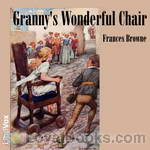 Granny's Wonderful Chair
Granny's Wonderful Chair
Her most famous work, Granny's Wonderful Chair, was published in 1856 and it is still in print to this day. It is a richly imaginative book of fairy stories and has been translated into many languages. This work, read as a child by Frances Hodgson Burnett, inspired the writings of Little Saint Elizabeth and Other Stories | |
By: Francis Godwin (1562-1633) | |
|---|---|
 The Man in the Moone
The Man in the Moone
A self-serving Spaniard discovers a means of traveling to the moon, describing his sensations in transit in terms remarkably consistent with modern astronauts' experiences. He finds on the moon a utopia, which he describes in detail, but being a fallen creature, he takes the first opportunity of coming home. ( | |
By: Francis Stevens (1883-1948) | |
|---|---|
 Serapion
Serapion
"An evil influence has been brought into touch with you," the medium warned Clayton Barbour. "A dead soul seeks to destroy your life that it may itself go on living." At that moment, Barbour began his grim struggle for possession of himself. | |
By: François Rabelais (1483-1553) | |
|---|---|
 Gargantua and Pantagruel
Gargantua and Pantagruel
The Life of Gargantua and of Pantagruel (in French, La vie de Gargantua et de Pantagruel) is a connected series of five novels written in the 16th century by François Rabelais. It is the story of two giants, a father (Gargantua) and his son (Pantagruel) and their adventures, written in an amusing, extravagant, satirical vein. There is much crudity and scatological humor as well as a large amount of violence. Long lists of vulgar insults fill several chapters. | |
By: Frank R. Stockton (1834-1902) | |
|---|---|
 The Bee-Man of Orn and Other Fanciful Tales
The Bee-Man of Orn and Other Fanciful Tales
A collection of nine enchanting short stories filled with curious beasts and unexpected endings. Included are The Bee-Man of Orn; The Griffin and the Minor Canon; Old Pipes and the Dryad; The Queen's Museum; Christmas Before Last: Or, The Fruit of the Fragile Palm; Prince Hassak's March; The Battle of the Third Cousins; The Banished King; and The Philopena | |
By: Friedrich de La Motte-Fouqué (1777-1843) | |
|---|---|
 Undine
Undine
Undine is a novel by Friedrich de la Motte Fouqué concerning Undine, a water spirit who marries a Knight named Huldebrand in order to gain a soul. It is an early German romance, which has been translated into English and other languages. The novel served as inspiration for two operas in the romantic style by Ernst Theodor Amadeus Hoffmann and Albert Lortzing, respectively, and two ballets: the nineteenth century Ondine and the twentieth century Undine. An edition of the book was illustrated by Arthur Rackham... | |
By: Fritz Leiber (1910-1992) | |
|---|---|
 Green Millennium
Green Millennium
From the classic science-fiction and fantasy author Fritz Leiber comes this intriguing tale of a green cat. From the author's introduction: "The world Phil Gish lived in was not a pretty one, and Phil didn't enjoy living in it. He was disillusioned, purposeless, hopeless, and haunted by the fear that a robot would take over his job. But then Phil was a timid person, not much given to adventure seeking. If he hadn't been so mild he might have found his kicks at All Amusements, the syndicated playground where anyone could find fun, providing he had the proper sadistic and otherwise aberrated elements in his personality... | |
By: G. K. Chesterton (1874-1936) | |
|---|---|
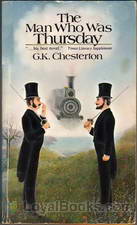 The Man Who was Thursday
The Man Who was Thursday
Two poets in a London park at sunset, debating on the attributes of poetry and whether it's really a metaphor for anarchy. A group that meets in secret, planning to overthrow the world order. Disguises and deceptions, ideals and ideology. A medley of themes and genres makes this a great read for anyone who's a fan of Chesterton and his iconic Father Brown. The Man Who Was Thursday includes Chesterton's favorite theme of Christianity with touches of delightful humor to enliven the twists and turns that abound throughout the book... | |
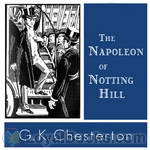 The Napoleon of Notting Hill
The Napoleon of Notting Hill
While the novel is humorous (one instance has the King sitting on top of an omnibus and speaking to it as to a horse: “Forward, my beauty, my Arab,” he said, patting the omnibus encouragingly, “fleetest of all thy bounding tribe”), it is also an adventure story: Chesterton is not afraid to let blood be drawn in his battles, fought with sword and halberd in the London streets, and Wayne thinks up a few ingenious strategies; and, finally, the novel is philosophical, considering the value of one man’s actions and the virtue of respect for one’s enemies. | |
 The Ball and the Cross
The Ball and the Cross
The Ball and the Cross is G. K. Chesterton's third novel. In the introduction Martin Gardner notes that it is a "mixture of fantasy, farce and theology." Gardner continues: "Evan MacIan is a tall, dark-haired, blue-eyed Scottish Highlander and a devout Roman Catholic.... James Turnbull is a short, red-haired, gray-eyed Scottish Lowlander and a devout but naive atheist.... The two meet when MacIan smashes the window of the street office where Turnbull publishes an atheist journal. This act of rage occurs when MacIan sees posted on the shop's window a sheet that blasphemes the Virgin Mary, presumably implying she was an adulteress who gave birth to an illegitimate Jesus... | |
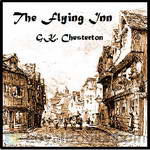 The Flying Inn
The Flying Inn
The Flying Inn is a novel first published in 1914 by G.K. Chesterton. It is set in a future England where a bizarre form of "Progressive" Islam has triumphed and largely dominates the political and social life of the country. Because of this, alcohol sales are effectively prohibited. The plot centers around the adventures of Humphrey Pump and Captain Patrick Dalroy, who roam the country in their cart with a barrel of rum in an attempt to evade Prohibition, exploiting loopholes in the law to temporarily prevent the police taking action against them. | |
By: George Chetwynd Griffith (1857-1906) | |
|---|---|
 The Romance of Golden Star ...
The Romance of Golden Star ...
| |
By: George E. Farrow (1866?-1920?) | |
|---|---|
 The Mysterious Shin Shira
The Mysterious Shin Shira
| |
 The Wallypug in London
The Wallypug in London
| |
 Dick, Marjorie and Fidge A Search for the Wonderful Dodo
Dick, Marjorie and Fidge A Search for the Wonderful Dodo
| |
By: George Griffith (1857-1906) | |
|---|---|
 Mayfair Magician; a Romance of Criminal Science
Mayfair Magician; a Romance of Criminal Science
Our narrator, a researcher, finds himself snowed in at a Scottish prison. The resident doctor, an observer of criminal psychology, offers him hospitality and entertainment in the form of this story, an account of the bizarre case of a strange prisoner in motorcycle goggles, why he must wear them, and what he did to earn a life sentence. - Summary by A. Gramour | |
By: George Horace Lorimer (1869-1937) | |
|---|---|
 The False Gods
The False Gods
| |
By: George MacDonald | |
|---|---|
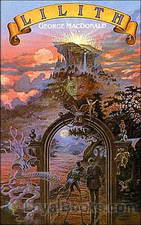 Lilith
Lilith
A fantasy novel first published in 1895, Lilith follows a young man on his inter-dimensional journey of spiritual discovery, as he acquaints himself with his family’s past and unearths a life-changing secret. Moreover, it deals with the introspection of its protagonist, as he is hurled into a mysterious setting where he encounters bizarre creatures that challenge the validity of his temporal values. Examining issues including the essence of life, wisdom, death, redemption, and salvation, the novel presents a masterfully woven plot that marks the piece as one of MacDonald’s darkest and most intense contributions to the fantasy genre... | |
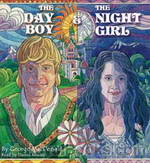 The Day Boy and the Night Girl
The Day Boy and the Night Girl
First appearing in Harper’s Young People as a serial, the piece focuses on the extraordinary tale of a young boy and a girl who have been brought up in a secluded and controlled environment by a wicked witch, incognizant of the world outside of their custom tailored settings. Enriched with magic, fantasy, romance, and allegory, The Day Boy and the Night Girl is a great instance of MacDonald’s excellent use of metaphors to express a deeper meaning to a seemingly simple fairy tale. The novel begins with the introduction of Watho, a wicked witch who has an insatiable thirst for knowledge... | |
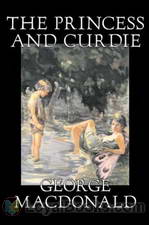 The Princess and Curdie
The Princess and Curdie
The Princess and Curdie is the sequel to The Princess and the Goblin by George MacDonald. It’s been a year since the Princess Irene and Curdie first met, and a year since the goblin incident and all appears to be going well in the Kingdom. Or is it? After a visit from Irene’s great-great-grandmother, Curdie finds himself on a mission to save the kingdom, with a rather strange companion in tow. | |
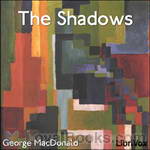 The Shadows
The Shadows
“Old Ralph Rinkelmann made his living by comic sketches, and all but lost it again by tragic poems. So he was just the man to be chosen king of the fairies…” George MacDonald (December 10, 1824 – September 18, 1905) was a Scottish author, poet, and Christian minister. Though no longer well known, his works (particularly his fairy tales and fantasy novels) have inspired admiration in such notables as W. H. Auden, J. R. R. Tolkien, and Madeleine L’Engle. The Shadows is one such fairy tale... | |
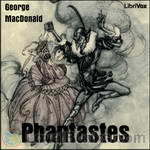 Phantastes
Phantastes
A young man named Anodos experiences dream-like adventures in Fairy Land, where he meets tree-spirits, endures the presence of the overwhelming shadow, journeys to the palace of the fairy queen, and searches for the spirit of the earth. The story conveys a profound sadness and a poignant longing for death. (Brad Powers) | |
 The Cruel Painter
The Cruel Painter
This is the story of a daring college student's quest to win the icy heart of a beautiful girl. Unfortunately, the girl is the daughter of a cunning and sadistic master artist, who takes the student as an apprentice with the express intent of torturing the youth with his own hopeless love. The story is set in late 16 century Prague, amid mysterious happenings and the terrifying rumors of a vampire on the loose. | |